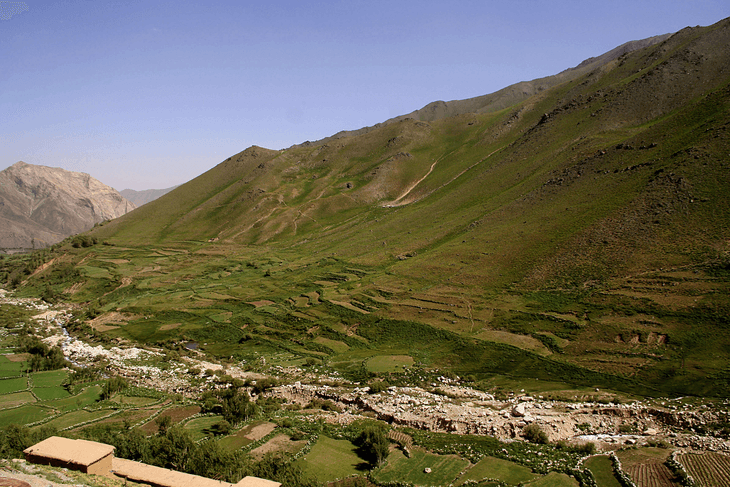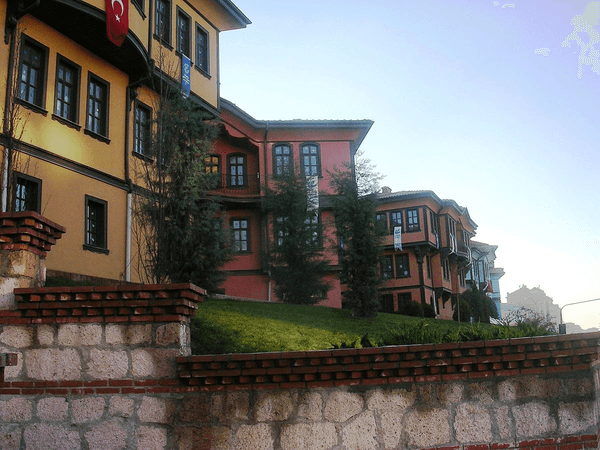
Food Ladder Oasis for Afghan Women
Status
ongoingCity
Kabul
Main actors
NGO / Philanthropy
Project area
Whole City/Administrative Region
Duration
Ongoing since 2015
Social enterprise project addressing food security of vulnerable women and their families in Afghanistan.
Afghanistan is one of the poorest countries in the world. 11 million Afghans or 36% of the population live in absolute poverty. Around 7 million Afghans are classed as food insecure, consuming less than 2,100 kilo–calories per day. Widows, of which there are said to be around 1.5 million in this war-torn country are especially disadvantaged with few options for them to earn an income and support themselves. (source: http://foodladder.org.au/media-announcement-female-leadership-delivers-collaboration-empowering-widows-afghanistan/)
Australian-based non-profit organisations Mahboba’s Promise and Food Ladder launched a collaborative social enterprise project addressing food security of vulnerable women and their families in Afghanistan. Food Ladder addresses food security by empowering the poorest people in the world with its environmentally sustainable, high-yield, hydroponic greenhouse garden system. This system derives from commercial farming techniques, delivering commercial-scale quality and output to the poor.
The aim of this project is to create a local source of food to communities and the technology which enables them to cultivate crops indigenous to their diets.
Facts about Afghanistan
After three decades of conflict, violence, oppression and famine, Afghanistan is one of the poorest countries on earth (UN Report)
According to the World Bank Group Report, October 2014:
● 11 million Afghans - 36% of the population live in absolute poverty;
● Only 28% of Afghans above 15 years old can read and write;
● Another 37% live only slightly above the poverty line;
● Only 23% of the population has access to safe drinking water.
Other report findings:
● One in ten children dies before their fifth birthday (UNICEF 2011);
● Afghanistan ranks 169th out of 187 countries on the Human Development Index, which measures life expectancy, literacy, education and quality of life (July 2014);
● 55% of children are chronically malnourished (World Food Program Report, 2014);
● In 2007 there were an estimated 60,000 street children in Kabul, begging to help provide the daily bread for their families;
● UNICEF estimated there are 2 million orphans in Afghanistan; one of the highest populations globally (2013) Food security (Afghan Agriculture, 2013):
● Over 7 million people - about 30% of the population - are food insecure (consuming less than 2,100 kcal/day) ;
● Of these 7 million, it is estimated that 2.1 million are severely food insecure (consuming less than 1,500 kcal/day)
Widows in Afghanistan (Beyond 9/11):
● There are an estimated 1.5 million widows out of an estimated 26.6 million people in Afghanistan, with some 50,000 to 70,000 in Kabul alone;
● The average age of an Afghan widow is 35 years, and 94% of them are unable to read and write;
● About 90% of Afghan widows have children, with the average widow having more than four;
● To survive many Afghans widows weave carpets, do tailoring, beg or engage in prostitution. In urban areas the average working widow earns about $16 a month.
Mahboba’s Promise, an organisation that has worked to support vulnerable women and children of Afghanistan for over 15 years will provide the location, utilising the site of its currently operating permaculture farm just outside Kabul for Food Ladder to install its innovative hydroponic social enterprise solution.
It is Food Ladder’s mission to deliver inexpensive, easy to operate horticulture infrastructure to communities challenged by inadequate or unreliable food supply to provide nutrient-rich produce and a means of employment for the poor, says Food Ladder Director Kelly McJannett. "In that sense this project in Afghanistan fits our mission perfectly".
The specific goals of the project are to,
- engage 30 widows in the social enterprise, provide training and employment through the hydroponic system,
- generate a yield of green leafy vegetables to supplement the diets of 250 people,
- and after 12 months, leverage funds generated through the sales of produce to expand and employ a further 10 widows from the community.
Kabul has a temperature range from 40C to -5C,” explains Mahboba’s Promise Founder and President, Mahboba Rawi. “This means that with regular farming methods there is only a window of 5 to 6 months in the year when food can be grown. The Food Ladder solution will enable more food to be produced for a longer period.”
It is expected that food production yields will be enough to allow families to not only cover their own consumption, but will also provide enough for sale at market to provide an income source.
Both Mahboba’s Promise and Food Ladder are eager to point out that the collaborative ‘Food Ladder Oasis for Afghan Women’ project will address various Millenium Development goals:
- Millenium Development goal 1, eradicate extreme poverty and hunger;
- Millenium Development goal 3, promote gender equality and women’s empowerment;
- and Millenium Development goal 7, ensure environmental sustainability
The current objective of Mahboba’s Promise is to raise $ 15,000 to set up a green house and hydroponic system.
The system will not only address the food needs of Mahboba’s community but deliver a surplus which will be sold back into the market so that they can cover their ongoing operations and maintenance costs. The series of greenhouses will be situated on two hectares of land that we can expand relative to the growth of the enterprise. In 3 years time they expect their operation and their outcomes to double.
Expected results:
Food Ladder will deliver a purpose built hydroponic system to generate enough produce to supplement the diets of 250 orphans and provide jobs for 30 widows in the first 18 months. Growing upwards of 3,000 plants at any given point and cropping every 5-6 weeks.
The pursued goal of this project is to empower afghan widows, and to create self-sufficiency for their families.
Food Ladder International has empowered hundreds of people throughout Australia and the slums of India with jobs growing much needed nutritious leafy greens that are sold back to the community.





